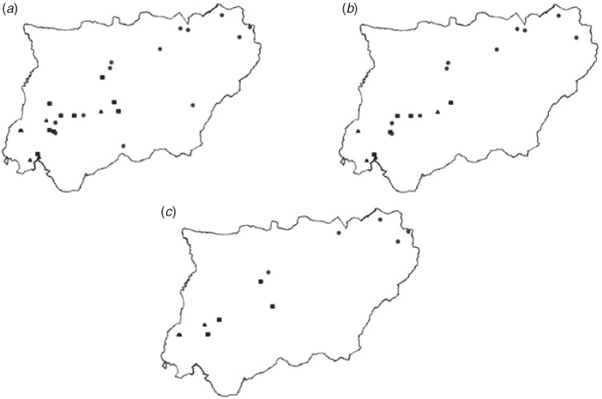
Abstract Identifying the environmental features affecting gene flow across a species range is of extreme importance for conservation planning. We investigated the genetic structure of the Egyptian mongoose ( Herpestes ichneumon) in Western Iberian Peninsula by analyzing the correlations between genetic distances and landscape resistance models. We evaluated several functional relationships between elevation, vegetation cover, temperature, and genetic differentiation under the original and reciprocal causal modelling approaches. Additionally, we assessed evidence of isolation-by-distance (IBD) in the mongoose population.
Feb 13, 2018 - Brown Lomolino Biogeografia Pdf To Excel. Serial Keygen - High Society Magazine Pdf Free Download - John Bunyan Calatoria Crestinului. Brown J H & Lomolino M V 1998. Cox C B & Moore P D 2000. Biogeography: an ecological and evolutionary approach. Blackwell Scientific Publications. Darlington P J 1982. Zoogeography: the gegographical distribution of animals. Krieger Publishing Company. Delacourt H R & Delacourt P A 1991. Quaternary ecology. Chapman and Hall.
Original causal modelling identified IBD as the best model explaining genetic patterns in the mongoose population. By contrast, reciprocal causal modelling supported high shrub cover at middle elevations as the best model explaining species gene flow. The results from reciprocal causal modelling demonstrate that the Egyptian mongoose is dependent of ecosystems dominated by Mediterranean shrub cover. Recent land-use changes related to rural abandonment promoted the growth of shrub areas, especially at middle elevations, facilitating genetic connectivity in the mongoose population in those areas, where anthropogenic activities are less intense. The present study should be considered as a model for landscape genetics studies of Mediterranean carnivores in the Iberian range with the aim of better understanding how recent land-use changes affect a broad guild of species. ,,,,, Introduction A landscape is an intricate and dynamic combination of distinct habitats, each one having possible impacts on the distribution of species (;; ). Understanding those pattern–process relationships is of extreme importance for unravelling the ecological characteristics of a population, as well as for assessing rates and patterns of gene flow across its distributional range ().
For example, sudden range shifts may be modelled according to stochastic processes () or as a consequence of more or less deterministic mechanisms, such as those resulting from a response towards a changing environment (). Land-use alterations have had large impacts on ecological processes across the globe (;; ). By transforming native ecosystems into altered landscapes, human-driven land-use practices dramatically affect biodiversity (;;; ). In recent years, several studies have highlighted the effect of anthropogenic land-use changes on species distributions in Mediterranean Europe (;;; ). Wolfenstein the new order key generator. Some studies not only reported effects of past landscape change in Mediterranean countries, but also projected severe consequences of potential future land-use changes (). Continued dispersal of individuals under a changing environment is critical to maintain genetic diversity within their population because dispersal constitutes one of the cornerstones for maintaining population viability (; ).